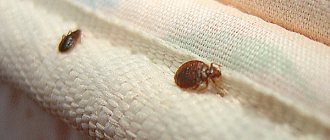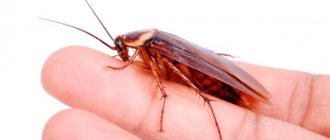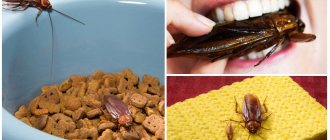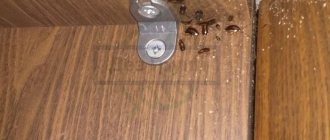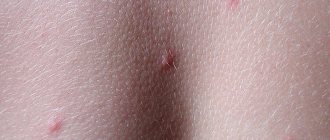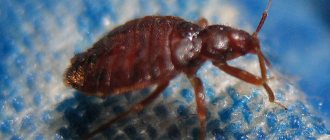A foreign body in the ear is a foreign object that is present in the external auditory canal or area of the middle or inner ear. Wax plugs and parasites are also recognized as foreign bodies.
The foreign body penetrates the ear canal, and if the eardrum is perforated, it can move into the cavity of the middle or inner ear. Depending on the size of the foreign body and how deeply it has penetrated, its removal is carried out by washing the ear canal, instrumentally or surgically. The treatment is carried out by an otolaryngologist. You cannot remove a foreign body from the ear on your own due to the high risk of tissue injury and further infection of the injury.
Why does a mosquito fly into your ear?
A blood-sucking parasite can enter the hearing organ for two reasons:
- Accident. Most often this happens on the street, when a person walks during the day in a wooded area, near water bodies. Disturbed mosquitoes fly up from their shelters and move chaotically, finding temporary refuge in the ear, since the inside of it is dark, warm and humid.
- Intentional hit. After the ectoparasite has drunk a sufficient amount of blood from a person, it looks for a place to rest and digest food. In some cases, the insect does not fly far, but hides in close proximity to the victim, including choosing the ear as a refuge.
Prevention measures
So we found out that there could easily be a cockroach in the ear, and we also determined what to do. A very important and serious question remains - how to prevent insects from getting into the ear space. I would like to answer right away that no one is immune from this, especially those who live in insufficiently sterile conditions, and also often engage in tourism, spending nights in a tent. First of all, you need to eliminate the possibility of cockroaches getting into your ear by destroying them.
If you notice that these mustachioed pests are present in the house, then you need to devote all your efforts to destroying them. Moreover, such actions must be taken immediately, before the insects have finally settled in the house and begin to lay eggs, since then it will be very difficult to remove them. If there are many methods that allow you to cope with cockroaches, it is not at all necessary to spend fabulous money on it and call specialists, if there are inexpensive means, as well as folk methods that our grandparents used.
However, cockroaches will not be able to disappear immediately; on the contrary, if poison or repulsive substances are placed near their habitats, then they will look for new crevices and holes, one of these is the human ear cavity - it is warm, relatively safe and very humid there, which is ideal conditions for insects to live, which is why we attract them. The best and only solution is to use earplugs. Of course, this will lead to difficulties and significantly reduce the quality of sleep, but there is no other way to cope with the problem.
Is a mosquito in the ear dangerous?
An ectoparasite that gets into the organ of hearing causes great discomfort to a person. Often this process is accompanied by pain. The following complications may develop:
- Hearing impairment. Occurs due to the presence of a foreign body in the ear canal.
- Damage to organ elements. The insect is not able to physically injure the walls of the “labyrinth”, the cochlea, the eardrum, and other components. However, a person can do this for him, trying to mechanically pull out the mosquito.
- Bacterial infections. If a mosquito gets into the ear and dies, after which it is not removed from the ear canal, then the risks of developing suppuration and local infection increase, which requires complex treatment in the future.
Removing the pest if it is clearly visible
If a mosquito gets into your ear and you can determine its location, you can perform simple steps to remove it. You need to arm yourself with a clean cotton swab or wrap cotton wool around a match, soak it in medical alcohol, ammonia or hydrogen peroxide. Carefully remove the mosquito using slow movements.
Finally, check the integrity of the insect. If part of the mosquito remains in your ear, you will have to contact a specialist or follow the steps described in the next section.
How can you tell if an insect is in your ear?
Signs of the presence of blood-sucking parasites in the ear are not specific and depend on the subjective sensations of the person, as well as the localization of the insect. Patients complain of discomfort, itching and pain in the ear canal, detect the mosquito's attempts to get out and its movements.
If no action is taken, then after 2-3 days the manifestations disappear (due to the death of the insect), but the preconditions are created for the development of a local inflammatory process. It is accompanied by the appearance of abundant serous discharge - thus, the body tries to get rid of the foreign body.
It is more difficult to diagnose the presence of a mosquito in the ear of young children who cannot yet speak. In this case, you should pay attention to the behavior and external symptoms of the child. The child regularly rubs the problem ear, becomes capricious, whiny, sleeps and eats poorly. Copious serous discharge flows from the auricle, which later turns purulent.
Article information
This article was co-authored by. Dr. Matsko is a retired physician from Pittsburgh, Pennsylvania. He graduated from Temple University School of Medicine in 2007.
Categories: First aid
In other languages:
English: Remove a Bug from Your Ear, Español: sacar un bicho del oído, Italiano: Togliere un Insetto dall'Orecchio, Português: Remover um Inseto do Ouvido, Deutsch: Einen Käfer aus deinem Ohr entfernen, Français: enlever un insecte de vos oreilles, Nederlands: Een insect uit je oor halen, 한국어: 귀에 들어간 벌레를 제거하는 법, ไทย: เอาแมลงออกจ Bahasa Indonesia: Mengeluarkan Serangga dari Telinga, Bahasa Indonesia: Mengeluarkan Serangga dari Telinga, 日本語:耳から虫を取り除く, Tiếng Việt: Loại bỏ Bọ khỏi Tai Bạn, 中文: 取出耳朵里的虫子, Čeština: Jak si odstranit brouka z ucha , हिन्दी: कान से कीड़ा बाहर निकालें
This page has been viewed 103,976 times.
Was this article helpful?
Not really
How to get rid of a mosquito?
There are a number of methods to get rid of insects in the organ of hearing. The most famous of them are presented below.
Simple contactless methods
Before using any means, try to remove the insect using non-contact methods. Action plan:
- Involve an assistant in the procedure and give him a flashlight or other bright color source. If available, provide the person with a magnifying glass. He may try to examine the ectoparasite in the ear and determine its exact location. The mosquito is removed with a cotton swab previously soaked in alcohol. The method is suitable only if the assistant clearly saw the insect and can easily reach it without plunging the working tool deep into the middle and deep sections of the organ.
- Turn your head to the side with the problematic ear down and vigorously tug the earlobe with your fingers. The mosquito falls out on its own.
- If you feel that the insect is moving independently closer to the outer part of the auricle, then do not make sudden movements, remove your fingers from the ear canal, taking a motionless position. In some cases, the mosquito crawls out of the ear on its own.
Classic safe extraction methods
The methods indicated below are safe for the human hearing organ. Scheme of sequential actions:
- Fill a syringe with clean water at room temperature. Lift your ear up and pour liquid into it. Wait one minute, then lower it to the floor and shake it several times. The insect will come out with the water.
- If the previous action does not have an effect, put olive oil or liquid glycerin into a pipette. Lie horizontally on your side with your insect ear facing the ceiling. Pour the working fluid into the ear canal and wait 15 minutes. Turn over to the other side, placing a napkin on the pillow. Wait another 15 minutes. The mosquito comes out with the oil.
If the methods described above did not help the first time, then repeat the cycle of events. If there is no result, contact an otolaryngologist. A qualified doctor, using a special tool, local anesthesia and his own experience, will pull out the mosquito.
First aid
Sometimes it happens that small insects and bugs crawl into the ear canal. This is not dangerous, since they cannot penetrate the eardrum.
However, when trying to escape from the external auditory canal, the living insect can sometimes thrash and knock on the eardrum, causing a lot of noise in the head and sometimes dizziness.
Important!
In such cases, children and impatient adults cannot find a place for themselves due to anxiety - it seems to them that the beetle has gnawed through a thin barrier and is ruling the brain. And if the bug gets stuck in the soft earwax and stops showing signs of life, an ominous silence sets in - the person thinks that he has gone deaf, forever.
There is no point in trying to extract the ill-fated visitor right in the forest. It is better to return home and try to do something not too extreme, in a calmer environment.
“If a live insect crawls into the ear canal, you need to take the victim to a dark room and shine a kerosene lamp or electric flashlight into the ear. An insect attracted to bright light will immediately crawl out or fly out.
If this method does not bring success, you need to kill the insect by dropping a few drops of alcohol or vodka. Immediately after this, pour a drop of warm water into the ear with a special syringe, which will carry the killed insect out.”
The second remedy from the same reference books: “If an insect gets into the ear canal, you can wash it out by carefully pouring warm water into the ear from a small mug.” You can try it once or twice. But if it is not possible to remove the insect in this way, under no circumstances should you even try to pull it out with tweezers, a knitting needle or a pointed match.
By introducing such instruments into the ear, you will only push the insect deeper, and also risk damaging the walls of the ear canal
But if it is not possible to remove the insect in this way, under no circumstances should you even try to pull it out with tweezers, a knitting needle or a pointed match. By introducing such instruments into the ear, you will only push the insect deeper, and also risk damaging the walls of the ear canal
You can try it once or twice. But if it is not possible to remove the insect in this way, under no circumstances should you even try to pull it out with tweezers, a knitting needle or a pointed match. By introducing such instruments into the ear, you will only push the insect deeper, and also risk damaging the walls of the ear canal.
What to do if something gets in your ear:
Conduct a visual inspection; all actions must be carried out as carefully as possible. The auricle is slightly pulled back in the upper direction; a small flashlight can help with inspection.
If an insect is found, you can try to remove it, but if it is not visible, then you should not remove it by touch, since during this process there is a risk of aggravating the situation or causing injury
In addition, there is a possibility that the insect will try to bite if you try to influence it too actively.
The injured person's head must be turned so that the ear points upward. Opposite it is a light source that can attract the insect, after which it will get out on its own, walking towards the bright light.
If the described measures do not help solve the problem, then a small amount of vegetable oil or warm water is poured into the ear, after which you must wait until the insect dies. This usually takes at least 2-3 hours.
The ear is additionally washed with a syringe, but if the dead insect still does not come out, then it is necessary to seek professional medical help without waiting for inflammation to occur.
READERS RECOMMEND!
Say goodbye to pests FOREVER!... An environmentally friendly device that repels rodents and insects will help in the fight against rodents and insects...
Prohibited actions
When carrying out mosquito extraction procedures, the following is prohibited:
- Pour any type of hazardous liquid into the ear canal. Alternative healers suggest using brilliant green, alkali and other aggressive substances as a replacement for water and vegetable oil. They can damage the internal elements of the hearing aid and cause serious complications.
- Pick the middle and inner part of the ear with objects. Matches, toothpicks, tweezers, and other products are prohibited from being used to extract mosquitoes. The exception is those situations when the insect is located in the upper part of the auricle and can be reached without any problems. In this case, use a cotton swab dipped in alcohol.
- Heat or cool the hearing organ. Cold and hot compresses (both dry and wet) can kill the insect, but not remove it. This increases the risk of developing otitis media and other problems.
- Do nothing. Even if the blood-sucking parasite dies on its own, but is not removed, after some time complications will arise - inflammatory processes, suppuration and other pathologies.
Risk of incorrect removal
During the “operation” you should not use sharp objects or insert cotton swabs too deep. In such a situation, there is a risk of damage to the eardrum. Sharp objects injure the skin, which is dangerous due to the development of the inflammatory process.
If done incorrectly, the following may happen:
- hearing loss;
- development of otitis media;
- inflammation;
- infection;
- pushing the mosquito deeper.
It is rare for a mosquito to get into your ear; if this happens, there is no need to panic. Nothing bad will happen in a few days; you can make an appointment with a specialist. Removing the insect will be professional, without serious consequences. It is advisable to take independent action if the pest is clearly visible or the person is in places remote from civilization. You can get a mosquito in half an hour.
When to see a doctor?
It is necessary to contact an otolaryngologist in the following cases:
- Formation of severe symptoms. We are talking about severe headaches, loss of consciousness and other non-standard manifestations.
- Lack of effect of home therapy. If the mosquito cannot be removed, then a doctor must carry out the procedure.
- Damage to hearing organs. If the insect was successfully removed, but the pain, burning and other unpleasant symptoms do not disappear within 1 day, then with a high degree of probability the elements of the hearing aid were damaged during the procedure.
Recovery process
What to do after removal? The cockroach got into the ear, it was successfully removed, what next? And then you need to carefully monitor your condition. When extracting it yourself, you need to make sure that the insect is intact. All the legs and wings are in place, there is absolutely nothing left in the ear. However, just in case, it is highly recommended to make an appointment with an otolaryngologist. It is worth understanding that after pulling out, unpleasant feelings of both a physiological and emotional nature may appear. These include vomiting, dizziness, and a feeling of pressure in the ear. Especially often, these signs are observed after suction or rinsing. After medical operations, you need to avoid intensive rest, sudden movements and various significant physiological stresses.
For 3-5 days after extraction, it is necessary to monitor whether suppuration has appeared. The cockroach could introduce an infection that develops over time. If you suspect an infection, you should definitely visit an ENT specialist. Signs of infection may include: high fever, redness, aching pain, dizziness, swelling and difficulty hearing.
